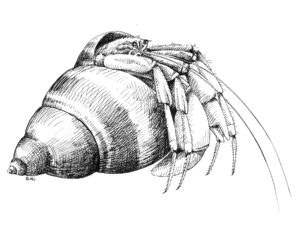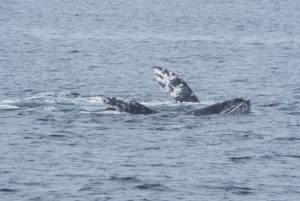PBS is launching a six-part documentary series that explores new thinking about the relationship between humans and nature. EARTH A New Wild stars conservationist M. Sanjayan as he takes viewers on a whirlwind tour of the world with a series of surprising and heart-touching stories of how humans are engaging with nature to meet their needs, while supporting natural systems in peril. As the human population grows, very little of the globe is left untouched by our presence and a growing number of conservationists, Sanjayan included, believe we need to develop new ways to integrate human and natural systems.

Sanjayan is executive vice president and senior scientist at Conservation International and has a storied career as a scientist and commentator. Born in Sri Lanka and raised in Sierra Leone, Sanjayan earned a doctorate in biology from the University of California, Santa Cruz in 1997. He will be in San Francisco on Thursday (January 15, 2015) to promote the series at the California Academy of Sciences with a screening and Q&A, beginning at 7pm. The series begins airing on February 4. Bay Nature recently spoke with Sanjayan.
Q: You talk a lot about wildlife and humans needing each other to survive. Most Bay Nature readers get why humans need wildlife, but I think humans are a mixed bag for wildlife. Are we the problem, or the solution or a bit of both?
I’m hoping in this series to get away from that question and rephrase it by making the point that we are part of nature. The question is not really about whether we are good or bad for nature. Since cyanobacteria, nothing on the planet has had as big an impact as us, and then it becomes let’s find ways to show people are bad for nature and ways that people are good for nature. Let’s change the debate and make it that humans are part of nature, and then you start realizing the reason for saving nature is about saving ourselves.
Q: Do you believe the definition of “wild,” needs to change? What would be a meaning that would carry us into the future?
The problem is, if I say ‘Yes, we need to define what wild is,’ what happens is people will argue about that because I think for a lot of people out there who are very beholden to this notion or this concept of wild, it almost feels like you’re taking a swipe at their church. I wouldn’t spend my time trying to define ‘wild,’ but i would spend my time trying to redefine what saving the wild actually means. To me it means it has to include humans.
In this film, one of the things we found going around the world is that even in a modern world of 7 billion people, wild nature still plays an instrumental role in our lives. You wouldn’t think that it would still be functional today. I think saving that relationship will really impact the future because the future is much brighter for humans if nature is part of that equation and if we are part of that equation for nature. The strongest cases I found for conservation are the ones that persist where people see themselves in the natural world and the natural world is integral to their lives.
Q: As you point out, humans are usually missing from the picture when we talk about wild nature. Do you think this sense of separation is what has, in fact, prevented us finding solutions to coexistence?
Certainly if you go into indigenous cultures or cultures living a hunter-gatherer lifestyle, you quickly see that people don’t see themselves as separate from what goes on around them. Western conservation has made this separation between wilderness being out there and us over here. The truth of the matter is it’s really difficult to find a place that is really wild.
Q: What then is the value of traditional conservation goals of setting aside “untouched wilderness”?
There is a place for that. There are things that are so rare or in such peril that you need to … save it that way. [In the film] we go from one of the wildest places on earth — the Intangible Zone in Ecuador where the Huaorani people live, all the way to New York City — and we show examples throughout that spectrum where people’s lives are dependent on nature and restoring or keeping nature healthy means people have a better life. The entire film can be boiled down to: Save Nature, Live Better.
Q: You give some incredible examples of re-wilding, like the pandas in China. What does it mean for a species to be wild when it has to be so painstakingly managed by humans? Which creatures do we put the effort into saving? Pandas are a notably charismatic one.
I’m not one of these people who believes [re-wilding] takes something away. I think it’s a stepping stone. It doesn’t make these animals any less amazing or less functional to the system. If we can put the wild back into the panda then we can probably do it to any other animal. To see one born in captivity, trained in the wild and released into the wild successfully — [the one in the film] she’s still out there and joined by others as well — that’s incredible and it doesn’t mean [pandas] won’t be able to stand on their own two feet. Take California condors, just this week there was a story about a pair that snuck away and managed to lay an egg and raise a chick secretly for six months. The wonderful thing about nature is that it somehow finds a way.
Q: Was it hard to find these inspirational stories in the film, or are they all around us?
They were all around us. There were so many of these stories, we only used maybe a third of the stories that we had on our original slate. That’s what is surprising. We found a lot of stories, and they were amazing stories and even ones I knew well, there was a surprise in there that shocked me, a sense of hopefulness or a surprise at how much humans are still reliant on nature.
Q: Any examples from California, where we live, that you could share with us?
We didn’t cover on film any stories in Northern California. None of them came up for that part of the world, but I think there are several there that would work. The wolf made it into Northern California, and a wolverine made it into California. I would have never imagined it possible that you still have salmon running in rivers in California. Sand hill cranes are swimming in a preserve outside of Sacramento. It’s stunning what a little water left behind for wildlife and a little change in a farming method can do to bring back 4,000 sand hill cranes. The recovery of the sea otters and what they’ve done to the recovery of the kelp forests, which trap an enormous amount of carbon, it’s one of the biggest carbon sinks in marine systems, all of that driven by the recovery of a 30-pound sea mammal. If that isn’t a pretty story we could tell that could have absolutely made it into the film.
Q: This film will reach a mainstream audience. What do you want people watching the film to get out of it?
The first thing is that I want people who watch this to come away with is that the world with people is still an amazing place, and when you realize you’re a part of nature it can be about saving ourselves. I also hope it sets a new benchmark in natural history filmmaking. There’s a split between the “planet Earth, blue chip documentary with Earth as a pristine never, never land with the voice of God narrating” and on the other side people wresting an animal and trying to eat it, and that’s not what we do.
For the screening Thursday, arrive at the back entrance of the Academy and enter via the Staff & Research Entrance located at 75 Nancy Pelosi Drive to check in at the reception desk.





